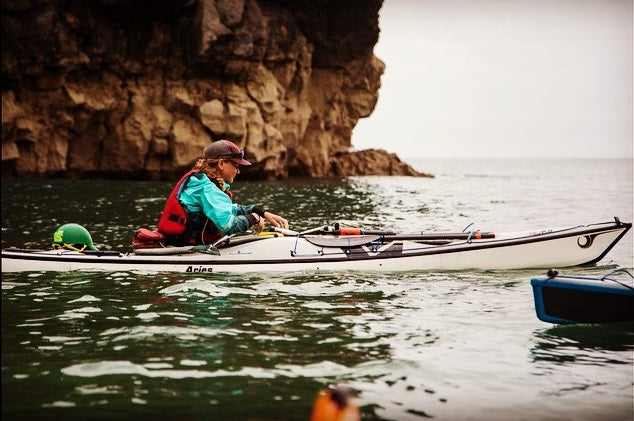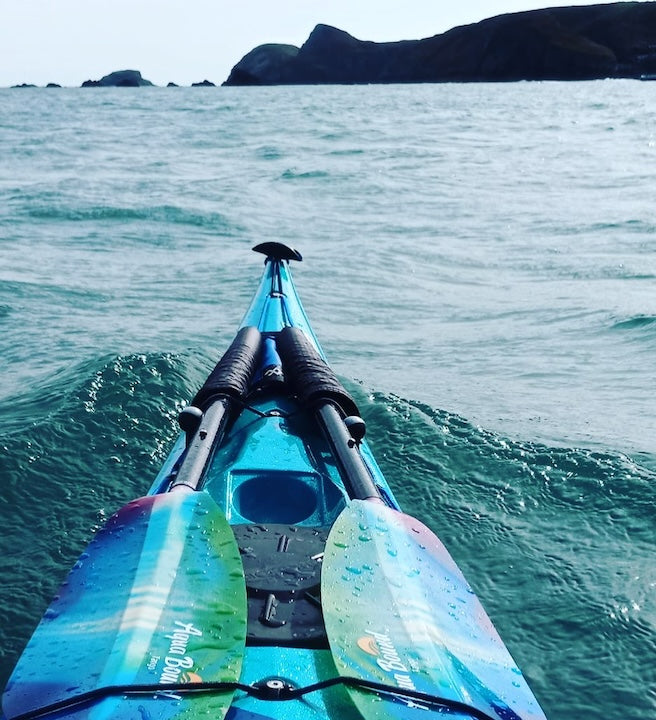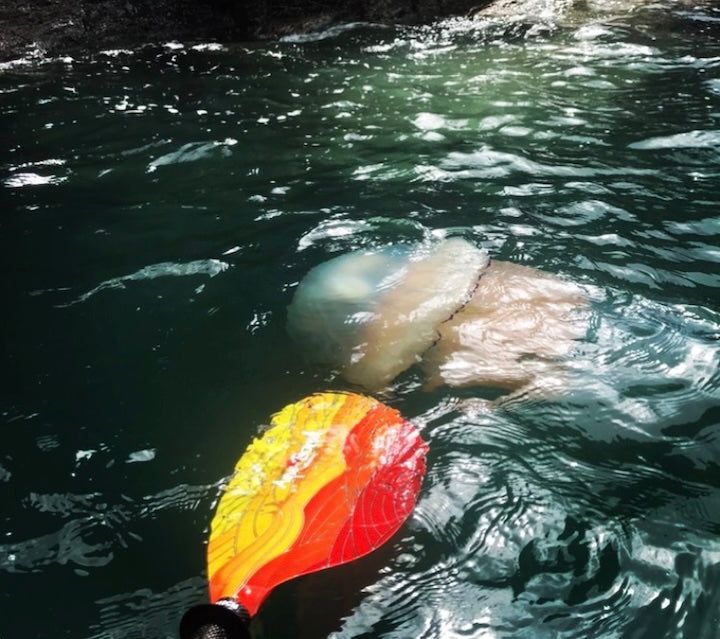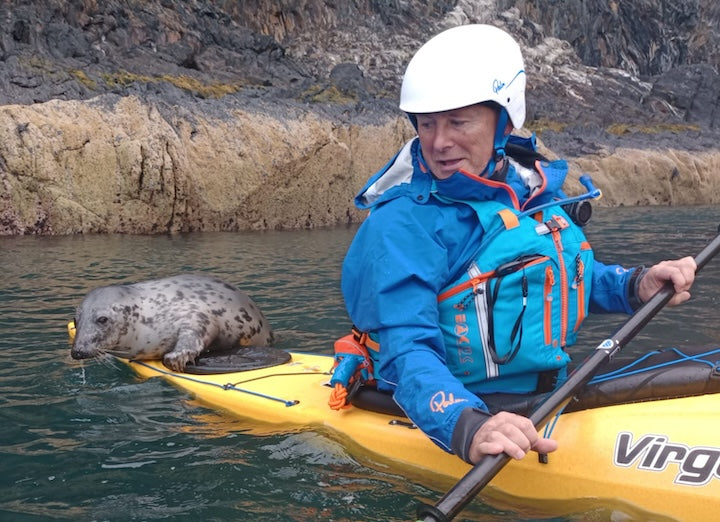Sea Kayaking Wildlife Encounters
4-minute read
Aqua Bound Ambassador Rachel Bott is a sea kayak guide and coach in Pembrokeshire, Wales. Some of her favorite kayaking spots are the remote islands in her area where she often is treated with wildlife encounters.

Kayaker, marine biologist and Aqua Bound Ambassador Rachel Bott
We asked her to share some of her experiences and know-how with us—both as a seasoned kayaker and as a marine biologist.
Here’s our conversation with Rachel:
AQUA BOUND: Tell us about some of your favorite remote islands to kayak.
RACHEL: I’ve been so fortunate to kayak in different locations around the world. In terms of remote islands, South Bishop also known as Emsger, off the coast of Pembrokeshire, West Wales has all the feels!!
The lighthouse there was once manned, however in 1983 it was automated and is now only occasionally visited by helicopter-transported folk for maintenance checks. There is an old, algae-covered set of steps climbing up the steep side of the small rock which feels like it’s in the middle of nowhere.
Once on the island your only real space to move around has been converted to a huge helicopter landing pad and boasts an ‘interesting’ lunch spot. With sea birds flying in all directions around this tiny island you feel like you have left the mainland long behind you. If the sea mist descends—which it did once on our approach—your navigation to and from the island is aided only by an eery and deafening fog horn.
In addition to South Bishop, some of the remote Islands of the Scilly Isles [off the tip of Cornwall, England] are spectacular. They boast bright white sandy beaches, albeit with glacially cold waters and tide races of their own design. Again, the native sea birds and marine wildlife create an atmosphere that has you feeling as though the mainland is a long way away.

The island of Ramsay, off the Pembrokeshire shore
AQUA BOUND: How is this type of kayaking different from coastal or inland sea kayaking?
RACHEL: It adds that extra layer of consequence, which never leaves you as successful as your crossing to get there may (or may not) have been. You are further away from help, comforts and conveniences. There will always be a return journey where the route and tidal planning have been calculated. This on top of curveballs from the weather will always be present in the back of your mind.
This being said, trusting in the systems and venturing out gives in equal measure a sense of true adventure and exploration. To be among the very few present—if anyone else is there—means the remoteness echoes a feeling of excitement and achievement.
I have found that paddling to more remote areas has created friendships over a shared experience that will remain forever. To escape from the well-trodden paths and really be away from it all is easily achievable in a sea kayak with hatches hungry for sleeping bags, rations, clothes and all the other requirements of an offshore adventure.
AQUA BOUND: Tell us about your favorite wildlife encounters when kayaking these islands.
RACHEL: I’m a marine biologist and wildlife fanatic so I love any opportunity to observe creatures in the wild.

The barrel jellyfish is a common sight seasonally in UK waters
I was casually paddling along the west side of Skomer Island last year when a Minke whale breached next to me. Playful seals climbed on our boats and nibbled our toggles in the Scilly Isles. And Risso’s dolphins have played underneath and around my kayak around St. Bride’s Bay.
Koalas hanging from the trees of the Kuringgai Chase National Park in New South Wales was right up there and nosey whale sharks in the Maldives. I feel the excitement from each of these experiences still so fresh and exhilarating.
AQUA BOUND: What are your tips for spotting wildlife while kayaking?
RACHEL: My best tip is not to look for the wildlife but to look for where something looks different. By this I mean a different pattern in the water, or splashing which catches your eye.
And follow the birds! They always know what’s going on from that high vantage point so I always have one eye on the sky. Often they indicate something unusual by aggregating in busy activity on the water or by lots of calling.

This seal wasn’t shy to hop a ride!
AQUA BOUND: What do kayakers need to keep in mind with wildlife encounters?
RACHEL: What might seem like benign behaviour, if repeated by many folks will have a significant knock-on effect on the creatures being observed. Let the wildlife come to you, don’t chase it down or approach it. Try to avoid splitting rafts of birds.
Most areas will have a Code of Conduct.
It’s our responsibility as kayakers and explorers of these areas to familiarise ourselves with them and behave in ways that promote the longevity of the different species and allow our passage through their realms without undue restriction.
A big thanks to Rachel for her time and photos! You can follow her on Instagram.
Do you have paddle questions our friendly Customer Service Team can help you with today? Contact them: 715-755-3405 • sales@aquabound.com
More for you...





